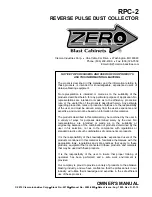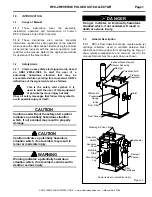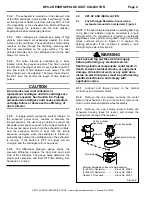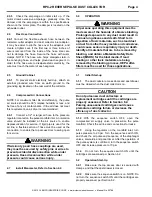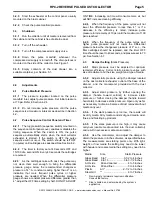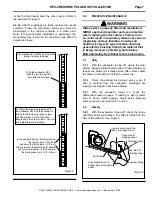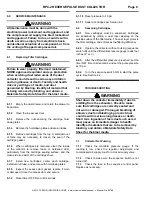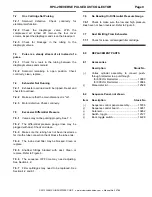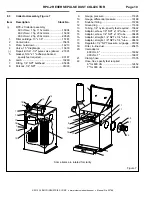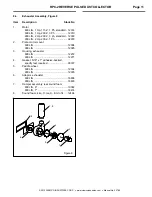
RPC-2 REVERSE PULSE DUST COLLECTOR
Page 7
© 2012 CLEMCO INDUSTRIES CORP.
www.clemcoindustries.com
Manual No. 22788
inches the fluid travels down the other column. Refer to
the example in Figure 5.
4.4.10
After the readings are taken, replace the needle
protector. Close the manometer valves and store the
manometer in the original container in a clean area.
Note: If the manometer installation is permanent, the
manometer may remain on the reclaimer body after the
valves are closed.
Figure 5
5.0 PREVENTIVE
MAINTENANCE
WARNING
Always wear a properly fitted and maintained,
NIOSH approved respirator and eye protection
when emptying the dust drawer. Failure to do
so could result in respiratory disease or serious
respiratory and eye irritation. Toxicity and
health risk vary with type of media, and dust
generated by blasting. Identify all material that
is being removed by blasting, and obtain a
Materials Safety Data Sheet for the blast media.
5.1 Daily
5.1.1
With the exhauster turned off, empty the dust
drawer. Heavily contaminated parts or friable media may
require the drawer be emptied more often. Never allow
the drawer to become more than a quarter full.
5.1.2
Check the exhaust air during a pulse cycle. If
dust is emitting from the exhauster, cartridges are
leaking or damaged. Check immediately.
5.1.3
With the exhauster turned on, check the
differential pressure gauge. If reading is high (greater
than 4" above initial reading), adjust pulse pressure
and/or sequence per Section 4.1 and 4.2.
5.2 Weekly
5.2.1
With the exhauster turned off, check the in-line
dust filter dust accumulation. The filter is located on the
side of the collector. See Figure 6.
Figure
6
Cartridge Sheet
Clean side of
cartridge sheet
Dust side of
cartridge sheet
Snubber Fitting
Low pressure line to top
side of cartridge sheet
High pressure line to
bottom side of cartridge
sheet
Dust Filter
The manometer must be vertical when
taking pressure readings.
With the exhauster OFF,
slide the rule to align the
zero with the fluid level.
In the example shown, fluid traveled up
the right column 1-3/4 inch,
and down the left column 1-3/4 inch.
Static pressure is determined by adding
the columns together. In the example,
the static pressure is 3-1/2 inches.
To obtain the pressure reading: With
the exhauster ON, add the number of
inches the fluid travels up the column,
and the number of inches the fluid
travels down the other column. The total
is the static pressure reading.

